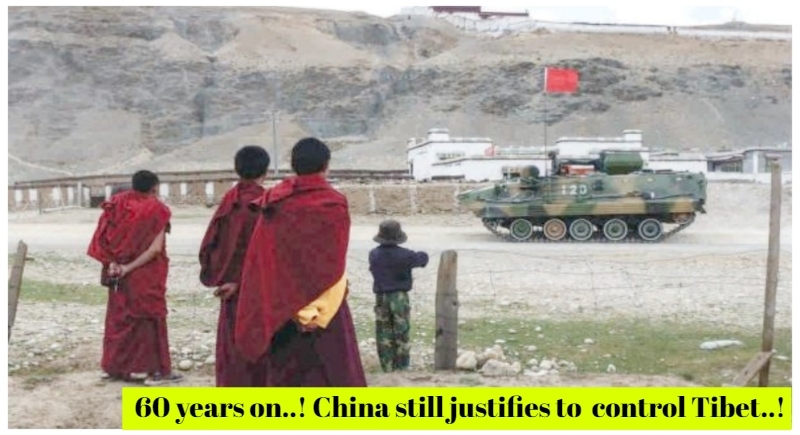Failing story of control, power and rule: China covers Tibet with new white paper trying to justify ‘all is well’
New Delhi, March 29: Having a hold on something gives you the power to have complete control over it. When the power weakens, you make desperate attempts to bring it back on hold. Something similar happened in Tibet when China’s new white paper on Tibet, “Democratic Reform in Tibet – Sixty Years On,” highlighted the policies of Chinese government which failed to win the hearts and minds of the Tibetan people. Very cleverly, China released the paper a day before the ‘Serf Emancipation Day,’ justifying China’s continued control over Tibet and to seek legitimacy.

With the attempt to hallmark the white paper, it was seen that China is making its efforts to signify that everything is fine in Tibet and the people are living there are happy. But are they really? By imposing the white paper, China has been deliberately claiming that all is well in Tibet even after the foreigners were restricted from visiting the place. If China was so sure about things to be good as the white paper claims, there should have been no fear in providing access to Tibet to independent observers, journalists and diplomats.
Claiming to have liberated Tibet and have benefited the Tibetans under its rule, China has made one thing clear that there propaganda should never be trusted. But all that glitters is not gold. Tibetans for all these years have been deprived from their right to live with freedom and dignity. It still remains a major liability for China in diplomatic affairs.
The fact is that to the Tibetan people, the Dalai Lama symbolizes their identity, religion and culture. The Chinese government knows that the only way for it to have genuine stability in Tibet and respect in the international arena is for it to engage directly with the representatives of the Dalai Lama in negotiations on Tibet’s future. But due to the lack of political courage to do this, they can only try to spin the narrative by coming out with documents like this white paper, which have no connection to the reality in Tibet today.
The white paper does not acknowledge the reasons for the continued grievances the Tibetan people have, as evidenced in a stark way by the more than 150 Tibetan self-immolations of the past decade. It rather dwells at length on the misdeeds of the government of independent Tibet.